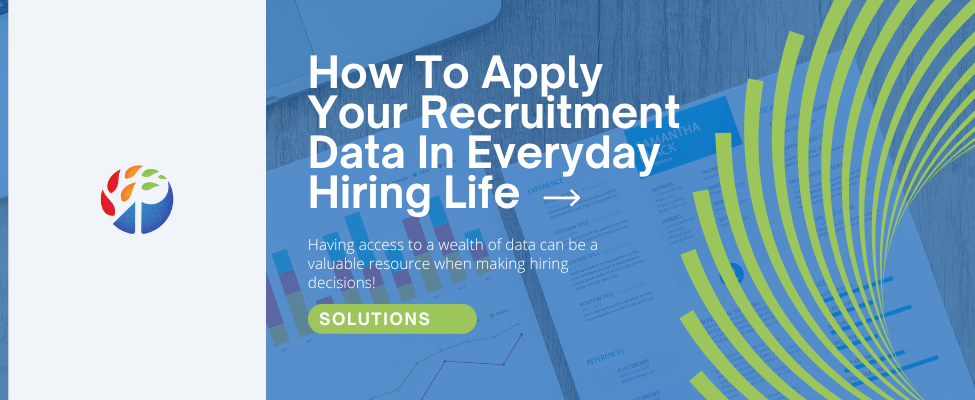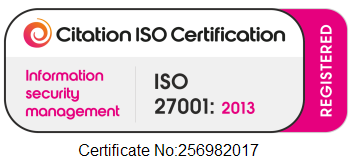How To Apply Your Recruitment Data In Everyday Hiring Life
In a data-driven world, companies are collecting vast amounts of information during their recruitment processes. From CVs and application forms to interview notes and candidate assessments, having access to a wealth of data can be a valuable resource when making hiring decisions.
Leveraging recruitment data effectively can lead to more informed and objective hiring choices, streamlining your process, and improving the overall quality of talent acquisition. In this blog post, we’ll explore how to apply your recruitment data in everyday hiring life to build a stronger workforce.
Common Recruitment Reporting Metrics
Recruitment reporting metrics are essential for assessing the effectiveness and efficiency of the hiring process. Here are some common recruitment reporting metrics:
Time-to-Hire: Time-to-hire is the duration from the initiation of the recruitment process to the candidate’s first day on the job. Monitoring time-to-hire helps identify bottlenecks and streamline the hiring process.
Cost-per-Hire: This metric calculates the total expenses incurred to fill a job vacancy. Keeping an eye on cost-per-hire assists in optimising recruitment budgets.
Source of Hire: The source of hire indicates where successful candidates come from, such as job boards, employee referrals, career fairs, or social media.
Offer Acceptance Rate: Offer acceptance rate calculates the percentage of candidates who accept job offers compared to the total number of offers extended. A low acceptance rate could indicate issues with compensation, benefits, or the organisation’s reputation.
Interview-to-Offer Ratio: This metric shows the number of interviews conducted per job offer extended. It helps assess the effectiveness of the interview process and identifies if multiple interviews are required to secure a successful candidate.
Quality of Hire: Quality of hire evaluates how well a new employee performs and integrates into the organisation over time.
Diversity Metrics: Tracking diversity metrics allows organisations to assess their efforts in promoting diversity and inclusion.
Retention Rate: The retention rate indicates the percentage of new hires who stay with the company for a specified period. A high retention rate suggests successful onboarding and a good cultural fit.
Application Completion Rate: This metric measures the percentage of candidates who complete the application process compared to the total number of candidates who started it. A low completion rate might suggest a complex or lengthy application process that needs improvement.
How To Apply Your Recruitment Data
Utilise Applicant Tracking Systems (ATS)
Applicant Tracking Systems are powerful tools that help manage and analyse recruitment data efficiently. ATSs can centralise all candidate information, making it easier to search, sort, and track applicants through the hiring pipeline. By using an ATS, you can quickly identify the most promising candidates, reduce manual paperwork, and make data-driven hiring decisions.
Analyse Historical Hiring Data
One of the most significant advantages of collecting recruitment data over time is the ability to analyse historical trends. By studying past hiring patterns, you can identify successful traits among top-performing employees. Are there certain educational backgrounds, work experiences, or skillsets that consistently lead to success in your organisation? Use this data to refine your job descriptions and tailor candidate searches to attract individuals with the highest potential for success.
Assess the Interview Process
Interview data is a goldmine of insights into candidate suitability and the effectiveness of the hiring process. By standardising the interview process and keeping track of interview data, you can identify any biases and ensure a fair evaluation of all candidates. Regularly reviewing interview data can lead to improvements in the interview process and help refine the selection criteria for future hiring endeavors.
Implement Structured Assessments
Supplement your recruitment data with structured assessments that objectively evaluate candidates’ skills and competencies. Whether it’s technical tests, cognitive assessments, or personality evaluations, structured assessments provide valuable data to compare candidates on an equal footing. This data-driven approach ensures that candidates are selected based on merit and their potential to excel in the role, reducing the risk of biased decision-making.
Monitor Diversity and Inclusion Metrics
Diversity and inclusion are vital components of a thriving workforce. Recruitment data can help you track diversity metrics throughout the hiring process, from the number of applicants belonging to different demographics to their progression through the recruitment stages. Use this data to identify any disparities and take proactive steps to promote diversity in your organisation actively.
Collect Candidate Feedback
Don’t overlook the significance of candidate feedback in your recruitment data. Their insights can shed light on your company’s reputation, the effectiveness of your recruitment strategies, and the candidate experience. Using this data, you can continuously improve your recruitment practices, ensuring a positive and attractive hiring process for future candidates.
Embracing the power of data in recruitment enables organisations to make informed, objective, and fair hiring decisions, ensuring they attract the best talent to drive success and growth.
Share this post and follow us on social media.
Like our blogs? Sign up for our newsletter




Comments are closed